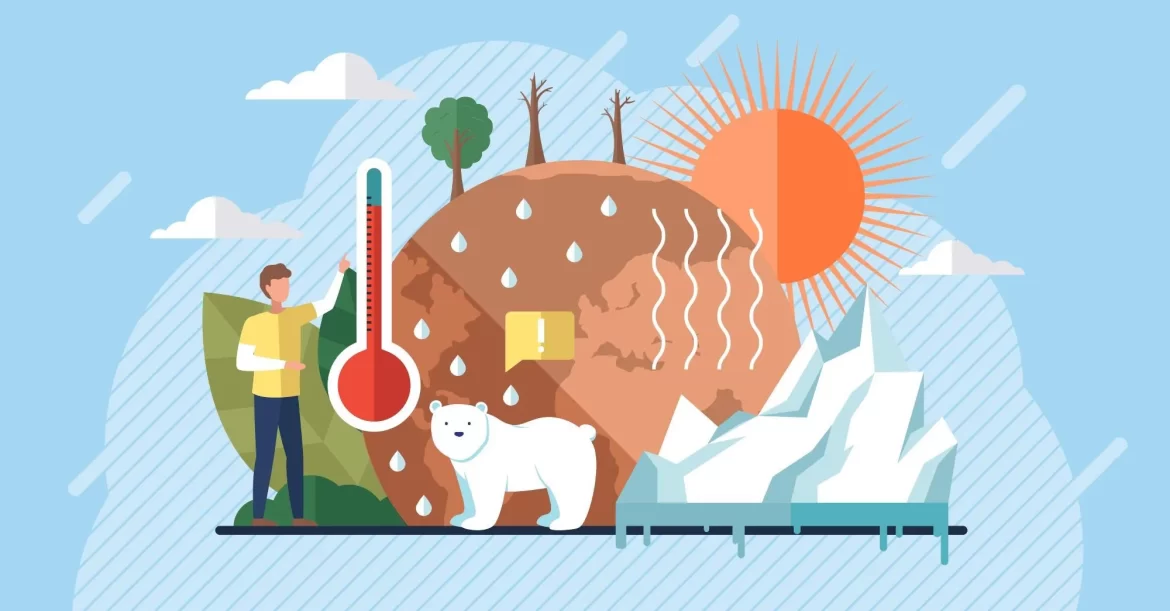Climate change threatens both air and water quality directly, as well as exacerbating existing health threats while also creating new ones.
Vulnerability to climate change varies between populations. This depends on factors like their risk sensitivity, likelihood of exposure and adaptive capacity; those most at risk include those living with preexisting conditions, the elderly and low-income communities.
1. Prevent Climate Change
Climate change poses an immediate health threat for millions of people worldwide, especially in developing regions. It exacerbates existing public health threats while creating new ones; its most immediate ramifications come in the form of damages to essential determinants like clean air, adequate water supply and food provision and adequate shelter – thereby directly harming millions.
Extreme heat waves, rising sea levels, shifting rainfall patterns and flood risk shifts, biodiversity loss and changes to biodiversity are also significant concerns that could have indirect repercussions for human health through environmental alterations. Mosquitoes that spread diseases such as malaria and dengue only thrive in certain environments – when climate change alters these habitats further they expand their range and spread disease further causing more illness in people.
Increased temperatures and changes in weather extremes can expose our food supply to pathogens and toxins, jeopardizing food safety. As such, greater care must be taken in food processing, labeling, and regulation.
2. Reduce Greenhouse Gas Emissions
Climate change poses a grave danger to human health, affecting individuals directly in numerous ways – air pollution can worsen respiratory illnesses; higher temperatures and longer heat waves; flooding increases and quality changes of water sources; foodborne illness outbreaks increase; these threats also have adverse impacts on mental wellbeing.
Climate-changing emissions could be reduced through various strategies, including switching to electricity produced from renewable sources or plastics that don’t emit greenhouse gasses during production. Deforestation and ecosystem degradation could also be mitigated through protecting land, improving agricultural production and restoring natural areas.
Climate change will have unequal effects on human health, with certain groups more vulnerable due to their sensitivity, high exposures or limited adaptive capacity than others. Examples include older adults, people living in coastal communities and low-income neighborhoods as well as reliant on electricity for critical medical equipment.
3. Adapt to Climate Change
Climate change increases health risks by dismantling key social determinants of wellbeing, such as clean air and water, adequate food and shelter. These increased risks disproportionately impact minorities, low-income communities, elderly adults, infants and children as well as people living with preexisting medical conditions.
Climate change not only has direct repercussions; it can also increase health care system costs through hospital admissions and emergency department visits due to heat-related illnesses or chronic medical conditions that worsen due to climate events. Climate events also create strain on infrastructure which provides essential services like water, electricity and transportation services.
To meet these challenges, some communities are turning to “nature-based” solutions in order to adapt to changing conditions. For instance, in Djibouti villagers have taken steps such as building flood walls to protect against flooding, as well as restoring mangrove forests which provide natural habitat for fish species while attenuating storm surges. Furthermore, others are including mental health into disaster risk planning efforts and improving post-disaster support – efforts supported by CDC’s Climate and Health Program through its Climate-Ready Tribes and Territories Initiative.
4. Educate the Public
Climate change’s unequal impacts can exacerbate existing health disparities between people, communities and regions. Vulnerable populations such as low income individuals, some communities of color, those with limited English proficiency or immigrant groups, indigenous peoples, pregnant women, older adults or those living with preexisting or chronic medical conditions are especially prone to suffering due to physical sensitivities, greater exposure or reduced capacity to respond. They include low-income individuals, pregnant women, older adults living with preexisting medical conditions and those residing within their communities or regions.
Climate-related threats to public health can be mitigated through various strategies and interventions, from strategies used by schools of public health to individual students taking steps toward increasing climate change competency as part of their studies. There are also many academic options open to students interested in this issue.
The global response to climate change must be comprehensive and address its drivers head on, and health professions are uniquely equipped to lead in this effort. Now is an opportune moment for health professions across sectors to unite behind bold action that must be taken against climate change.








